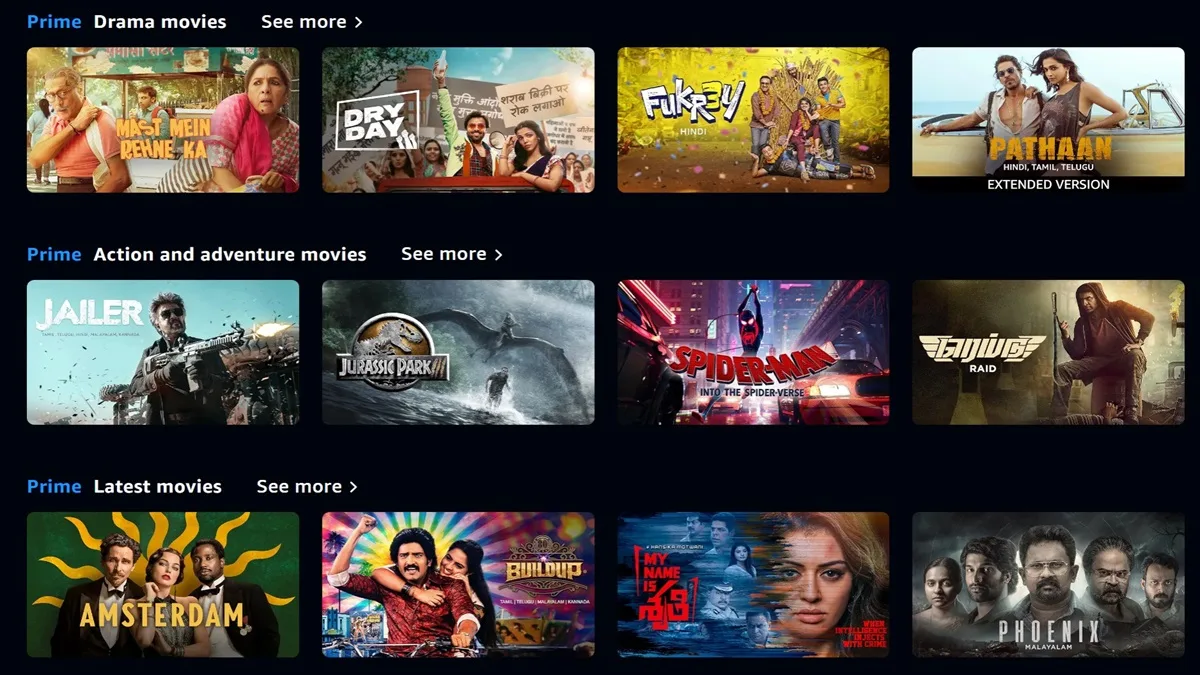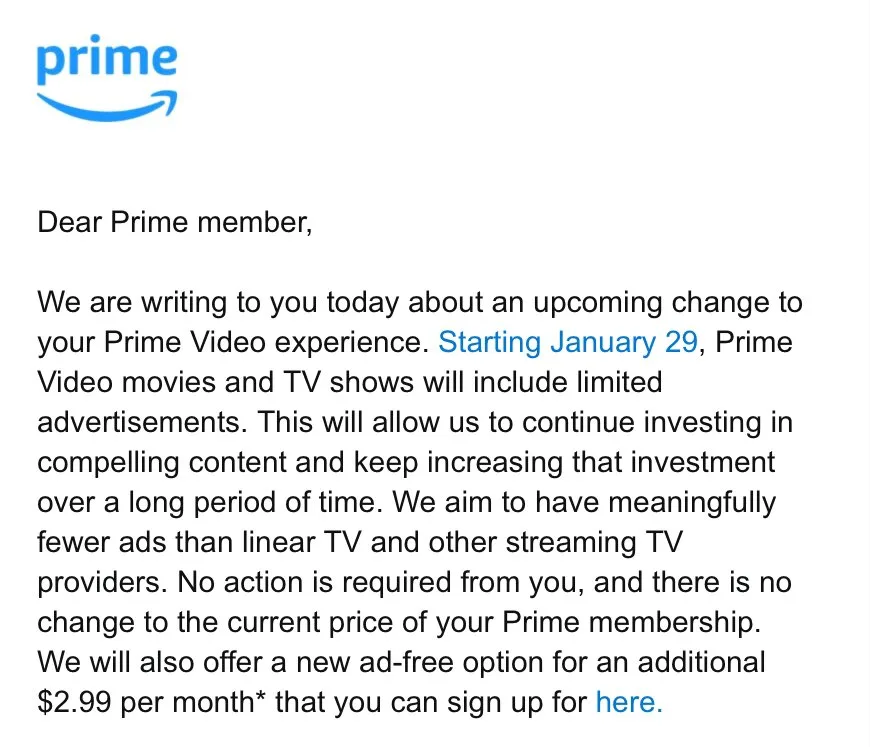
Starting January 29, 2024, Amazon’s popular streaming service will begin displaying “limited advertisements” alongside movies and TV shows, marking a significant shift in its ad-free business model, according to an email sent to subscribers this week and seen by ABC News.
The ads will be shown before and during the programs and will feature products and services from Amazon and its partners. The company claims that the ads will be relevant to the viewers’ interests and preferences and that they will help fund more original and exclusive content for Prime Video.
“This will allow us to continue investing in compelling content and keep increasing that investment over a long period of time,” the company said. “We aim to have meaningfully fewer ads than linear TV and other streaming TV providers.”

However, not everyone is happy with this move. Some customers have expressed their frustration and disappointment on social media, saying that they already pay a monthly fee for Prime Video and do not want to see ads. Others have questioned the legality and ethics of inserting ads into licensed content without the consent of the creators or owners.
Fortunately, there is a way to avoid the ads, but it comes at a cost. Amazon is offering an ad-free option for Prime Video subscribers, but it will require an additional payment of $2.99 per month. This means that the total cost of Prime Video will go up from $8.99 to $11.98 per month for those who choose this option.
The company says that this is a fair and reasonable price, considering that other streaming services charge more and have less content. It also says that the ad-free option will give customers more flexibility and control over their viewing experience.
The introduction of ads on Prime Video is part of a larger strategy by Amazon to expand its advertising business and compete with rivals like Google and Facebook. The company already shows ads on its website, app, devices, and other platforms, generating billions of dollars in revenue every year.
The ads on Prime Video will initially roll out in four countries: the U.S., U.K., Germany and Canada. Later in 2024, they will be extended to France, Italy, Spain, Mexico, and Australia. Other regions may follow suit in the future.
Catch more celebrity scoops, TV drama, and movie updates in our Entertainment section.
From red carpets to streaming originals, PanAsiaBiz keeps you in the loop.

